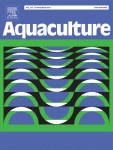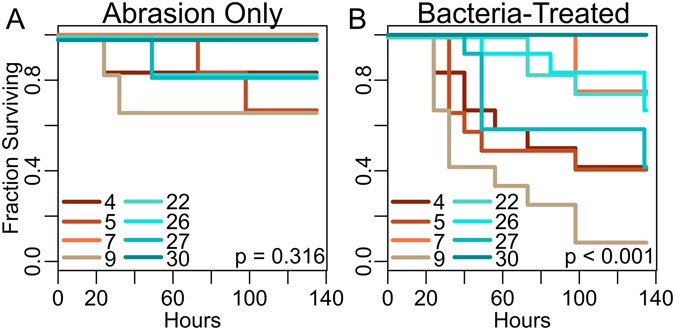Hi everyone,
I am new in the forum and I noticed there are tons of threads about this already.
I just wanted to report this article I red recently about the effect of continuous vs mainly blue light spectrum on coral growth (in the experiment they use Galaxea sp.).
Tim Wijgerde, Peter Henkemans, Ronald Osinga. Effects of irradiance and light spectrum on growth of the scleractinian coral Galaxea fascicularis — Applicability of LEP and LED lighting to coral aquaculture. Aquaculture, https://doi.org/10.1016/j.aquaculture.2012.03.025.

They compare a balanced (almost flat) spectrum (LEP) vs the usual blue-dominated spectrum used in the hobby (LED).
I suppose a similar effect given by LEP lighting can be obtained with full spectrum white led fixtures.
In the discussion of the article they state:
"This study did not reveal a significant main effect of light spectrum on specific growth rates of G. fascicularis, as overall growth rates of corals grown under LED light were not different from those cultured under LEP. This contradicts our first hypothesis that an unbalanced light spectrum with high blue emission (i.e. LED) is preferable to a balanced, continuous spectrum (i.e. LEP) in terms of coral growth. A significant interactive effect between irradiance and light spectrum was found, demonstrating that the effect of spectrum on coral growth was modulated by irradiance."
and also:
"The most probable cause of the absence of a main spectrum effect in this study, in this case absence of higher coral growth rates under blue LED lighting relative to LEP, is limiting water flow rate. Light has been shown to interact with water flow rate, as irradiance exerts a less pronounced effect on coral growth under low flow regimes (Osinga et al., 2011, Schutter et al., 2011). This may be due to the fact that low water flow results in accumulation of oxygen produced from photosynthesis within the coral tissue, leading to a subsequent increase in photorespiration and a corresponding decrease in photosynthetic efficiency (Mass et al., 2010)."
I am no expert in the field but I was wondering whether this might be the reason why species that thrive under low flow regimes are also less demanding in terms of light intensity (and apparently spectrum as well). For more demanding species it might be that flow is actually the limiting factor rather than light spectrum/intensity..
Also if you have species that prefers low flow it is actually detrimental to use very intense blue LED illumination.
I am very curious to hear the opinion of the community given that so many have years of experience in this hobby.
I am new in the forum and I noticed there are tons of threads about this already.
I just wanted to report this article I red recently about the effect of continuous vs mainly blue light spectrum on coral growth (in the experiment they use Galaxea sp.).
Tim Wijgerde, Peter Henkemans, Ronald Osinga. Effects of irradiance and light spectrum on growth of the scleractinian coral Galaxea fascicularis — Applicability of LEP and LED lighting to coral aquaculture. Aquaculture, https://doi.org/10.1016/j.aquaculture.2012.03.025.
They compare a balanced (almost flat) spectrum (LEP) vs the usual blue-dominated spectrum used in the hobby (LED).
I suppose a similar effect given by LEP lighting can be obtained with full spectrum white led fixtures.
In the discussion of the article they state:
"This study did not reveal a significant main effect of light spectrum on specific growth rates of G. fascicularis, as overall growth rates of corals grown under LED light were not different from those cultured under LEP. This contradicts our first hypothesis that an unbalanced light spectrum with high blue emission (i.e. LED) is preferable to a balanced, continuous spectrum (i.e. LEP) in terms of coral growth. A significant interactive effect between irradiance and light spectrum was found, demonstrating that the effect of spectrum on coral growth was modulated by irradiance."
and also:
"The most probable cause of the absence of a main spectrum effect in this study, in this case absence of higher coral growth rates under blue LED lighting relative to LEP, is limiting water flow rate. Light has been shown to interact with water flow rate, as irradiance exerts a less pronounced effect on coral growth under low flow regimes (Osinga et al., 2011, Schutter et al., 2011). This may be due to the fact that low water flow results in accumulation of oxygen produced from photosynthesis within the coral tissue, leading to a subsequent increase in photorespiration and a corresponding decrease in photosynthetic efficiency (Mass et al., 2010)."
I am no expert in the field but I was wondering whether this might be the reason why species that thrive under low flow regimes are also less demanding in terms of light intensity (and apparently spectrum as well). For more demanding species it might be that flow is actually the limiting factor rather than light spectrum/intensity..
Also if you have species that prefers low flow it is actually detrimental to use very intense blue LED illumination.
I am very curious to hear the opinion of the community given that so many have years of experience in this hobby.

















